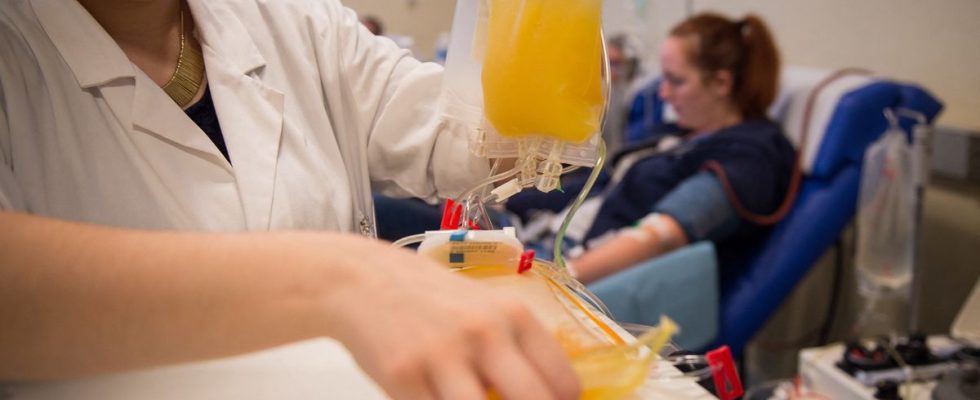There are sometimes tense situations with reserves in the red, especially during holiday periods. But on the whole, we respond rather well to blood needs in France with more than 1.5 million regular donors. This is much less true for plasma with only 250,000 donations collected each year. This liquid component of blood is nevertheless vital because its proteins are used in the manufacture of about fifteen medicines essential to patients suffering from immune deficiency. “It is also used for hemorrhagic diseases such as hemophilia or Willebrand’s disease and sometimes in intensive care”, indicates Bruno Danic, director of the French Blood Establishment (EFS) in Brittany, estimating at 500,000 the number of patients treated with plasma-derived drugs.
But for lack of sufficient donations, LFB, the only French laboratory authorized to fractionate national plasma, is having difficulty in obtaining raw materials. “We are in a situation of permanent shortage”, alarms Bruno Danic. Only a third of the drugs used in France come from plasma collected on national territory, the other two thirds coming from the United States. How to explain such a dependency? First, because plasma donation is relatively unknown. More restrictive also because a plasma donation lasts about an hour, compared to only ten minutes for a blood donation. Moreover, it can only be carried out in a donation center and not during a mobile collection, forcing donors to travel more kilometres.
Paid donation in the United States, something unimaginable in France
But the explanation for this dependence vis-à-vis the United States is mainly due to the fact that plasma donation is remunerated on the other side of the Atlantic, something unimaginable in France. “There is here an ethical principle of non-commodification of the human body”, underlines the director of EFS Bretagne, pointing out the excesses of the American model which is based “on a form of exploitation of poverty”. There, donors can also donate every other day, whereas in France we must respect a two-week period between each donation. “We don’t know the consequences of giving so often, so there is a real risk to the donor’s health,” he says.
While the Covid-19 pandemic has highlighted the issue of health sovereignty, France is therefore seeking to raise awareness about plasma donation with a major campaign launched by the French Blood Establishment. A plasma plan has also been set up by the health authorities with the aim of collecting 1.4 million liters of plasma within five years, which represents 700,000 additional donations each year. “The march is high, recognizes Bruno Danic. But it responds to the scale of the need, which is growing every year. »
To speed up collection, a first donation center entirely dedicated to plasma was inaugurated at the beginning of June in Hazebrouck in the North. “It’s a solution, but we will also have to find new donors,” warns the director of EFS Bretagne.

